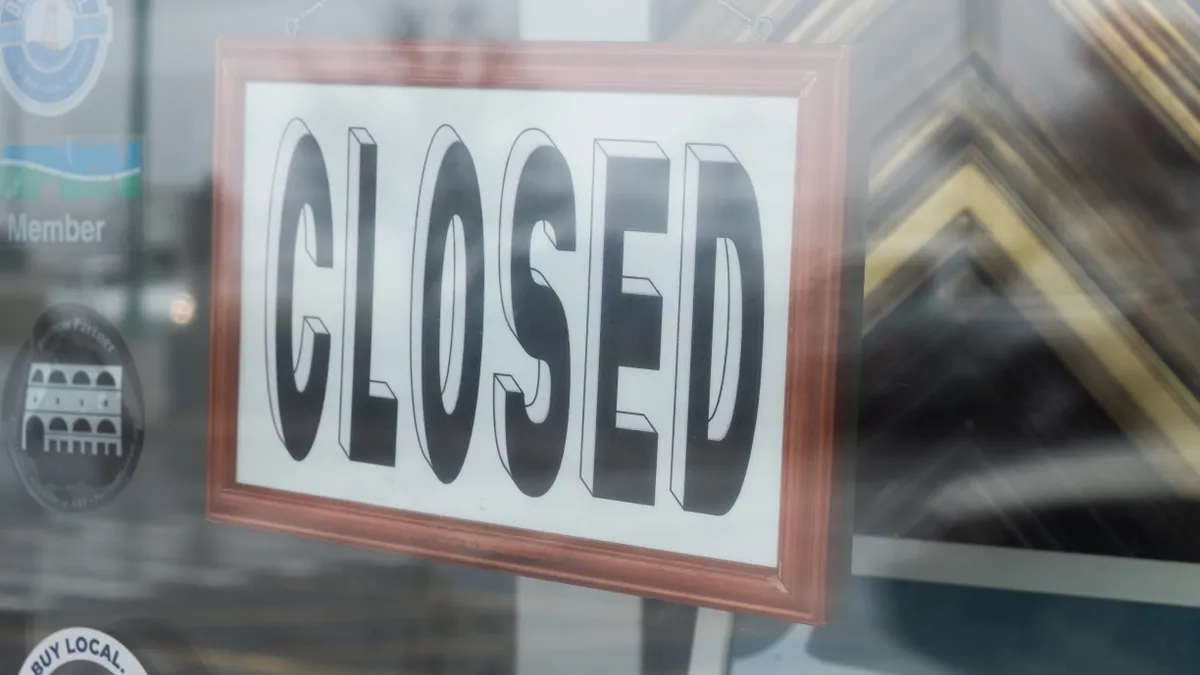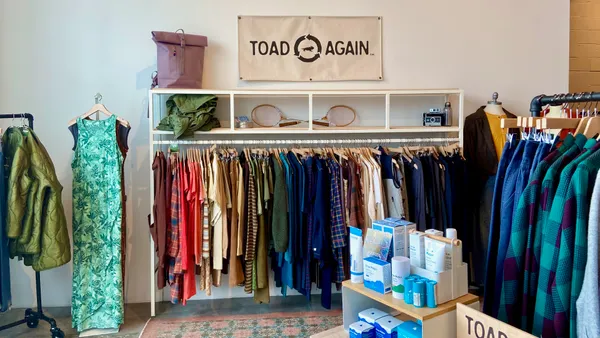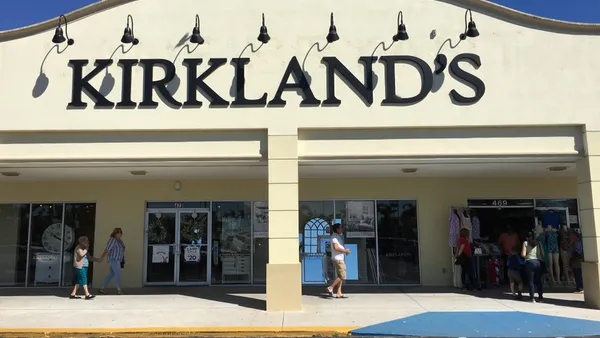Dive Brief:
-
In a report that several analysts noted hasn't been so bleak since the Great Depression, the Department of Labor said Friday that the U.S. lost 20.5 million non-farm jobs in April, pushing the unemployment rate to 14.7%.
-
The number of retail jobs fell by 2.1 million, with 740,000 out of work at clothing and clothing accessories stores and 209,000 at furniture and home furnishings stores, according to the report, released by the Bureau of Labor Statistics. General merchandise stores, which include warehouse clubs and supercenters, actually gained 93,000 jobs, the government said.
-
Average hourly earnings in April rose by $1.34 to $30.01, with average hourly earnings of private-sector production and nonsupervisory employees up by $1.04 to $25.12. But those increases "largely reflect the substantial job loss among lower-paid workers," according to the report.
Dive Insight:
As the Labor Department noted in its report, the alarming employment decline measured last month reflects "the effects of the coronavirus (COVID-19) pandemic and efforts to contain it." The agency also revised down its job count for the previous two months, saying there were 45,000 fewer jobs in February and 169,000 fewer jobs in March than previously reported.
As consumers and businesses slow their spending due to the pandemic, the hospitality and leisure industries were first to get hit, and that is now taking its toll on sectors dependent on service and manufacturing, according to a report from Challenger, Gray & Christmas.
COVID-19's impact is clear in the numbers: Of the 671,129 job cuts that Challenger tracked last month — the most by U.S.-based employers in a single month since the firm first began its measurements in 1993 — 633,082 were due to COVID-19. Since March, 744,926 jobs were lost due to the pandemic, the firm said in an email.
"This stunning contraction was the largest loss of jobs in both absolute and percentage terms since the series began in 1939," Jay Bryson, Acting Chief Economist at Wells Fargo Economics Group, wrote in emailed comments. "Sadly, there will be more job losses reported when the May report is published next month, because seven million additional individuals have subsequently filed for unemployment benefits."
Citing the government's Thursday jobless claims report, he noted that 18 million out of 23 million unemployed workers say they are experiencing temporary layoffs. Many retailers have furloughed workers in hopes of rehiring once stores can reopen. While that "give[s] some hope," it also "remains to be seen," and Wells Fargo expects the unemployment rate to top 6% at the end of next year.
Bryson also warned that, as the government notes, the raise in wages "is hardly a sign of strength" because it reflects significant job losses among the lowest paid workers.
"If, as we expect, the unemployment rate remains elevated in coming months, then growth in hourly earnings should weaken considerably," he said.
The situation is unlikely to improve much, even as social distancing requirements lift. Euromonitor International economists predict that the U.S. "will face the most severe recession since the Great Depression" and lowered its forecast for global GDP, from their previous expectation for 2.6% to 3.4% growth to a decline of 1.5% to 4%.
The job losses are setting up U.S. retailers, which represent the second-largest market behind China, for "the steepest slump of all other countries this year," according to GlobalData Retail Analyst Emily Salter. U.S. retailers could lose more than $200 billion in revenue compared to last year as spending is on track to fall 5.1%, she said in emailed comments.
While some states are easing their rules, many retailers remain closed and footfall "will be severely limited through to the end of May," she said, adding that "normal spending patterns will not return until at least October," with many consumers still constrained "because of the high unemployment rate caused by the economic restrictions currently in place."















